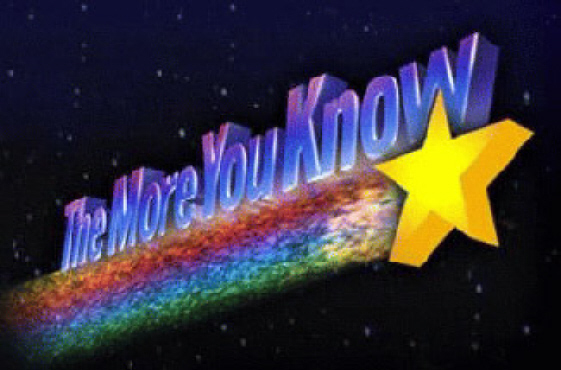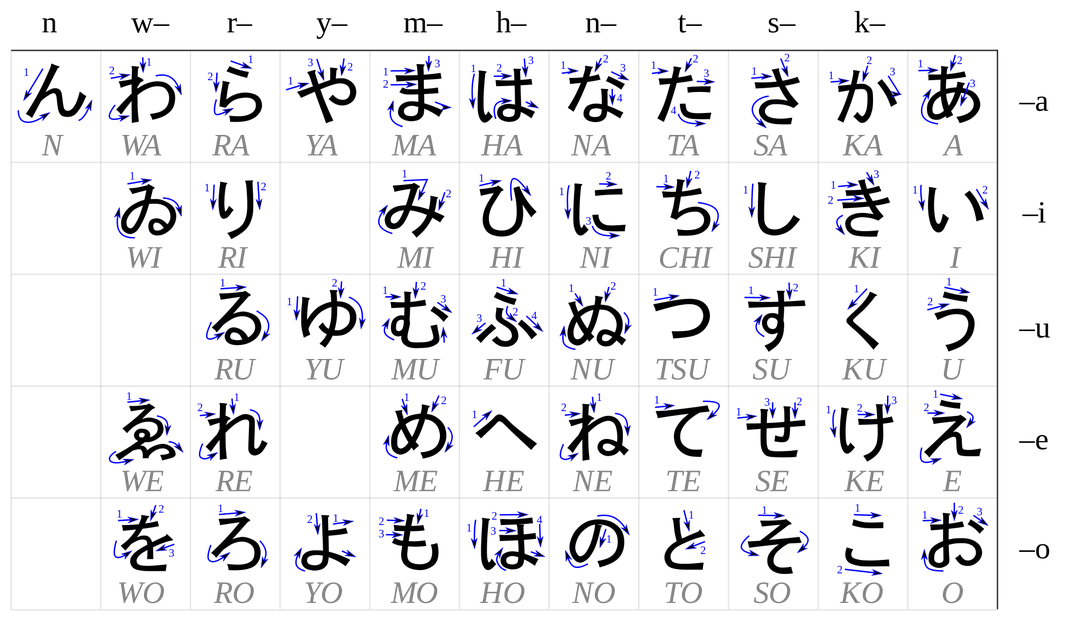
Learning a foreign language is hard. Even if you master all the vocabulary and grammar, there’s still no guarantee that you’ll ever achieve a native-like accent. For Japanese learners of English, differentiating between the “l” and “r” sounds and pronouncing the “th” sound correctly can be tricky them no matter how many years they’ve been practicing.
But have you ever wondered what it’s like the other way around? What sounds do we English speakers make that sound strange when we speak Japanese? Well it turns out the sound that we mess up the most is one you might not have expected: “fu”.
Now you might be thinking: The “fu” sound? What’s so hard about that? I pronounce it fine all the time. Like when I slept on a futon at Mt. Fuji in fuyu (winter) and woke up feeling futsukayoi (hungover).
Well if you’re pronouncing those words with an “f” sound like we have in English, then you’re actually saying them all wrong. To find out the reason why, we have to have a quick linguistics lesson.
▼ Yes there will be a test. No you haven’t studied. You haven’t even shown up to class all semester. Also you’re in your underwear and falling from a skyscraper.
The English “f” sound is, in phonetic terms, a “voiceless labiodental fricative.” Don’t worry, by the end of this article you’ll be a master of that phrase and more and will totally impress all of your friends, I swear.
Basically what that long phrase means is, the “f” sound, like most sounds humans can make, has three components that come together to make it up. First, it’s “voiceless.” That means it doesn’t vibrate your vocal cords when you say it. To feel what a “voiced labiodental fricative” feels like, hold your fingers to your throat and make the “v” sound. You should feel a lot of vibration, but nothing when you make the “f” sound.
Second, it’s a “labiodental.” That means it’s pronounced using your lips (labio) and teeth (dental). There’s a bunch of different places sounds can be made: your lips (“p”), your teeth (“t”), at different points on your tongue (“l”), in your throat (“h”), or a combination of them.
Lastly, it’s a “fricative.” This means the sound is made by the “friction” of air coming through a gap, in this case the small opening between your lips and teeth. Some other fricatives are the “s” sound, a fricative between your teeth, and the “th” sound, a fricative between your teeth and tongue.
Putting it all together, we now know that the English “f” sound is a “voiceless labiodental fricative,” meaning your vocal cords don’t vibrate, it’s pronounced using your lips and teeth, and by pushing air through the gap they make.
▼ Dee dee dee deeee!

So what does this have to do with Japanese pronunciation? Well now we have the tools to clearly see where the pronunciation has gone wrong. The English “f” may be a “voiceless labiodental fricative” but the Japanese “f” is a “voiceless bilabial fricative” – one component different.
Since the Japanese “f” is a “bilabial” instead of a “labiodental,” that means it’s pronounced using both your lips, no teeth necessary. Instead of touching your teeth to your lip and spitting out air like you just slammed your finger with a hammer, instead bring your lips together like you’re blowing out a candle (no need to stick them out like you’re kissing), then try to say “fu” without moving your lips or teeth or anything at all.
▼ I’m learning Japanese!

If you did it correctly, then you should have made a beautiful “fu” sound. If you’re still having trouble though, then let the knowledgeable Sayuri-san guide you to enlightenment.
If you’ve seen a Japanese syllabary chart like one below, you may well have noticed that ha, hi, he, and ho are all written with an “h”. Weirdly, though, only “fu” – despite being in the same column as the characters beginning with “h” – is written with an “f” when Roman characters are used.
Weird, right? So if the Japanese “f” sound is different from the English “f” sound, why do we even use the letter “f” to write it in the first place? Well the answer is: because it’s close enough. It could be written with the letter “h” too (a “voiceless glottal fricative” – only one component different just like “f”), and sometimes it is. Just be thankful it’s not written with the technically correct International Phonetic Alphabet symbol: ɸ. You’d have to copy/paste that badboy into your textbox every time you want to write about how you ate fugu (blowfish) and feel perfectly futsuu (normal).
▼ You also might inadvertently open a gate to Phyrexia if you use that symbol, so stick with the “f.”

Since the Japanese “voiceless bilabial fricative” (see, I told you that you’d get these by the end!) is actually quite rare among languages, the “f” pronunciation problem unfortunately goes both ways – it hinders Japanese speakers trying to learn English too, and so “f” can come out sounding more like “h”, leading to mix-ups between words like “food” and “hood,” “furry” and “hurry,” or the ever-dangerous “heart and “fart.”
Of course, in the end, perfect pronunciation isn’t what’s important about speaking a language. It’s about having a solid vocabulary, a good grasp of the grammar, cultural knowledge, and most importantly the confidence to actually speak, even if you have a horribly broken accent. In fact there’s probably only one conceivable time when your ability to pronounce “f” correctly might result in a life or death situation:
▼ “What if I’m working as a spy somewhere and the only way they figure out I’m Japanese because I say ‘fu’ wrong? I’d better be careful.”
https://twitter.com/tamiya2121/status/408414570261123072
Source: Naver Matome, Wikipedia
Top/featured image: Mangatop (edited by RocketNews24)



 The reason why Japanese students don’t pronounce English properly
The reason why Japanese students don’t pronounce English properly Only one out of five Japanese people can pronounce these hiragana — can you?
Only one out of five Japanese people can pronounce these hiragana — can you? Japanese elementary school student teaches us all how to pronounce English like a native speaker
Japanese elementary school student teaches us all how to pronounce English like a native speaker Japanese, Korean, and Chinese speakers pronounce English words in their native languages 【Video】
Japanese, Korean, and Chinese speakers pronounce English words in their native languages 【Video】 How do you pronounce “Among Us” in Japanese? Simple question has linguistically deep answer
How do you pronounce “Among Us” in Japanese? Simple question has linguistically deep answer Cyberpunk anime meets traditional culture in Ghost in the Shell gold leaf Japanese changing screens
Cyberpunk anime meets traditional culture in Ghost in the Shell gold leaf Japanese changing screens This is possibly the coziest train in all Japan thanks to onboard hot spring footbaths【Pics】
This is possibly the coziest train in all Japan thanks to onboard hot spring footbaths【Pics】 More Than a Capsule Stay: Why Solo Travelers Choose “global cabin Yokohama Chinatown”
More Than a Capsule Stay: Why Solo Travelers Choose “global cabin Yokohama Chinatown” New Japanese menstrual product seeks to help women spot unidentified iron deficiencies
New Japanese menstrual product seeks to help women spot unidentified iron deficiencies Sumo Sanrio! Hello Kitty and pals team up with Japan Sumo Association for new merch【Pics】
Sumo Sanrio! Hello Kitty and pals team up with Japan Sumo Association for new merch【Pics】 Starbucks Japan ready to get Year of the Horse started with adorable drinkware and plushies【Pics】
Starbucks Japan ready to get Year of the Horse started with adorable drinkware and plushies【Pics】 7 great places to see Mt. Fuji from without having to climb it
7 great places to see Mt. Fuji from without having to climb it The humane (and adorable) way to make a flat hamster 【Video】
The humane (and adorable) way to make a flat hamster 【Video】 Godzilla-shaped ice cream on sale in Tokyo near the sight his most adorable rampage
Godzilla-shaped ice cream on sale in Tokyo near the sight his most adorable rampage Stamina-destroying “Paralysis Noodles” are Tokyo’s newest over-the-top ramen innovation
Stamina-destroying “Paralysis Noodles” are Tokyo’s newest over-the-top ramen innovation Disillusionment at Tsukiji’s tourist-target prices led us to a great ramen restaurant in Tokyo
Disillusionment at Tsukiji’s tourist-target prices led us to a great ramen restaurant in Tokyo Japan may add Japanese language proficiency, lifestyle classes to permanent foreign resident requirements
Japan may add Japanese language proficiency, lifestyle classes to permanent foreign resident requirements Lacquerware supplier to emperor of Japan and Pokémon team up for new tableware
Lacquerware supplier to emperor of Japan and Pokémon team up for new tableware Starbucks Japan releases new zodiac chilled cup drink for 2026
Starbucks Japan releases new zodiac chilled cup drink for 2026 7-Eleven Japan’s ramen-cooking robot whipped us up a bowl of noodles【Taste test】
7-Eleven Japan’s ramen-cooking robot whipped us up a bowl of noodles【Taste test】 Japan’s otoshidama tradition of giving kids money at New Year’s gets a social welfare upgrade
Japan’s otoshidama tradition of giving kids money at New Year’s gets a social welfare upgrade Hello Kitty Choco Egg figures are an adorable trip through three periods of Japanese pop culture【Pics】
Hello Kitty Choco Egg figures are an adorable trip through three periods of Japanese pop culture【Pics】 7-Eleven Japan starts new temporary luggage storage service in over 300 branches
7-Eleven Japan starts new temporary luggage storage service in over 300 branches Can a dirty butthole make you filthy rich in Japan? We’re starting a New Year’s lottery experiment
Can a dirty butthole make you filthy rich in Japan? We’re starting a New Year’s lottery experiment Japan’s human washing machines will go on sale to general public, demos to be held in Tokyo
Japan’s human washing machines will go on sale to general public, demos to be held in Tokyo Starbucks teams up with 166-year-old Kyoto doll maker for Year of the Horse decorations【Photos】
Starbucks teams up with 166-year-old Kyoto doll maker for Year of the Horse decorations【Photos】 Tokyo considering law requiring more trash cans following litter increase in heavily touristed area
Tokyo considering law requiring more trash cans following litter increase in heavily touristed area Tokyo’s Tsukiji sushi neighborhood asks tour groups to stay away for the rest of the month
Tokyo’s Tsukiji sushi neighborhood asks tour groups to stay away for the rest of the month Nintendo’s Kirby now delivering orders at Kura Sushi restaurants, but not in Japan
Nintendo’s Kirby now delivering orders at Kura Sushi restaurants, but not in Japan Tokyo event lets you travel back in time, for free, to celebrate 100 years since Showa era start
Tokyo event lets you travel back in time, for free, to celebrate 100 years since Showa era start Sanrio theme park in Japan announces plans to expand into a Sanrio resort
Sanrio theme park in Japan announces plans to expand into a Sanrio resort Survey asks foreign tourists what bothered them in Japan, more than half gave same answer
Survey asks foreign tourists what bothered them in Japan, more than half gave same answer Japan’s deadliest food claims more victims, but why do people keep eating it for New Year’s?
Japan’s deadliest food claims more victims, but why do people keep eating it for New Year’s? We deeply regret going into this tunnel on our walk in the mountains of Japan
We deeply regret going into this tunnel on our walk in the mountains of Japan Studio Ghibli releases Kodama forest spirits from Princess Mononoke to light up your home
Studio Ghibli releases Kodama forest spirits from Princess Mononoke to light up your home Major Japanese hotel chain says reservations via overseas booking sites may not be valid
Major Japanese hotel chain says reservations via overseas booking sites may not be valid Put sesame oil in your coffee? Japanese maker says it’s the best way to start your day【Taste test】
Put sesame oil in your coffee? Japanese maker says it’s the best way to start your day【Taste test】 The top 10 annoying foreign tourist behaviors on trains, as chosen by Japanese people【Survey】
The top 10 annoying foreign tourist behaviors on trains, as chosen by Japanese people【Survey】 No more using real katana for tourism activities, Japan’s National Police Agency says
No more using real katana for tourism activities, Japan’s National Police Agency says Starbucks Japan reveals new sakura drinkware collection, inspired by evening cherry blossoms
Starbucks Japan reveals new sakura drinkware collection, inspired by evening cherry blossoms Pronunciation anxiety: many Japanese people don’t want to speak English unless it’s “perfect”
Pronunciation anxiety: many Japanese people don’t want to speak English unless it’s “perfect” “Japanese English” can baffle native English speakers — but what about Korean speakers? 【Video】
“Japanese English” can baffle native English speakers — but what about Korean speakers? 【Video】 Everyday Japanese names that make English speakers chuckle
Everyday Japanese names that make English speakers chuckle “We wasted so much time in English class” — Japanese Twitter user points out major teaching flaw
“We wasted so much time in English class” — Japanese Twitter user points out major teaching flaw Counting sheep to get to sleep may work after all, unless you speak Japanese
Counting sheep to get to sleep may work after all, unless you speak Japanese The top 10 hardest Japanese words to pronounce – which ones trip you up?【Video】
The top 10 hardest Japanese words to pronounce – which ones trip you up?【Video】 Clever font sneaks pronunciation guide for English speakers into Japanese katakana characters
Clever font sneaks pronunciation guide for English speakers into Japanese katakana characters English conversation school in Japan has clever reminder that students don’t have to be perfect
English conversation school in Japan has clever reminder that students don’t have to be perfect Japanese student teased for American pronunciation gets sweet revenge on classmates
Japanese student teased for American pronunciation gets sweet revenge on classmates “Same sh*t different day” – Nice Japanese people swearing in English 【Video】
“Same sh*t different day” – Nice Japanese people swearing in English 【Video】 Japanese netizens give their thoughts on how English has changed the meaning of “senpai”
Japanese netizens give their thoughts on how English has changed the meaning of “senpai” Things Japanese people believe about British vs. American English
Things Japanese people believe about British vs. American English An introduction to the fun world of wasei eigo or Japanese-made English 【Video】
An introduction to the fun world of wasei eigo or Japanese-made English 【Video】 Magazine teaches Japanese using Kemono Friends anime, Japanese netizens can’t stop laughing
Magazine teaches Japanese using Kemono Friends anime, Japanese netizens can’t stop laughing NTT showcases technology which can “correct” Japanese people’s English pronunciation
NTT showcases technology which can “correct” Japanese people’s English pronunciation
Leave a Reply